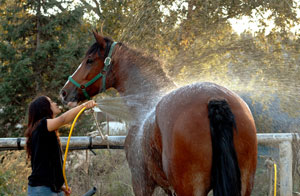 Summer is the time to get your horse in peak condition; take some extra long rides and enjoy the rays. But as temperatures rise, so do the risks of your horse experiencing heat stroke, dehydration and other health problems associated with heat. If not recognized and treated properly, these health issues can be debilitating and even life threatening. Managing your horse’s summer training program and adjusting it to fit the weather is imperative.
Summer is the time to get your horse in peak condition; take some extra long rides and enjoy the rays. But as temperatures rise, so do the risks of your horse experiencing heat stroke, dehydration and other health problems associated with heat. If not recognized and treated properly, these health issues can be debilitating and even life threatening. Managing your horse’s summer training program and adjusting it to fit the weather is imperative.
Temperature Control
As the blood is cooled and recirculated, it helps regulate core body temperatures. The dilated nostrils that bring in huge volumes of oxygen to the lungs also exhale body heat with every breath. Under normal circumstances, these natural adaptations are sufficient to keep a horse’s body temperature within safe parameters. But when horses are asked to exert themselves in conditions of high heat and humidity, the potential for heat-induced illness is very real.
Hot Stuff
What would be considered moderate exercise under temperate weather conditions can have the same effect as intense activity when the heat and humidity rise. When is it too hot to trot? A good rule of thumb when assessing how the heat will affect your workout is to measure the Heat Stress Index (HSI). If the sum of the temperature in degrees Fahrenheit plus the percent of humidity totals less than 120, all systems are “go.”
If the sum is greater than 150, particularly if humidity contributes to more than half of this number, your horse’s natural cooling mechanisms will be compromised. You should consider lowering the intensity of your workout, shortening the length of time, or riding later in the day.
If the HSI is greater than 180, a horse cannot regulate his core body temperature naturally, so he should not be forced to work. For instance, if it is 100 degrees with 80 percent humidity, leave your horse in a shaded paddock with plenty of cool, clean drinking water and go have a cold drink yourself.
But sometimes you have little or no choice about whether to ride. Competitions are rarely cancelled due to heat. Sometimes the thermometer just sneaks up on you, and you are out on the trail or deep into a training session before you realize the temperature has climbed beyond the comfort zone. Or maybe you are intentionally conditioning for heat tolerance because you know that an upcoming event will take place in hot, humid conditions. Either way, you need to know the signs of heat stress and how to avoid or treat them.
Dehydration
Dehydration literally means “to remove water.” But horses don’t just lose water when they sweat. They also lose essential minerals and salts, called electrolytes (potassium, sodium, chloride, calcium, magnesium and other ions), which are essential to all of the body’s metabolic processes and nerve functions. Slight dehydration causes little, if any, change in behavior and can be easily remedied by drinking fresh water. Moderate dehydration can cause lethargy, and you should administer electrolytes and provide access to water. Severe dehydration is a serious condition requiring IV fluids. If not attended to properly, severe dehydration can cause colic, collapse and even death.
A racehorse running at a full gallop can lose as much as two-and-a-half gallons of sweat in less than two minutes. It may take an average horse an hour to lose the same amount through prolonged work, but in either case, if not allowed to replenish the fluids lost through sweating, he will steadily dehydrate.
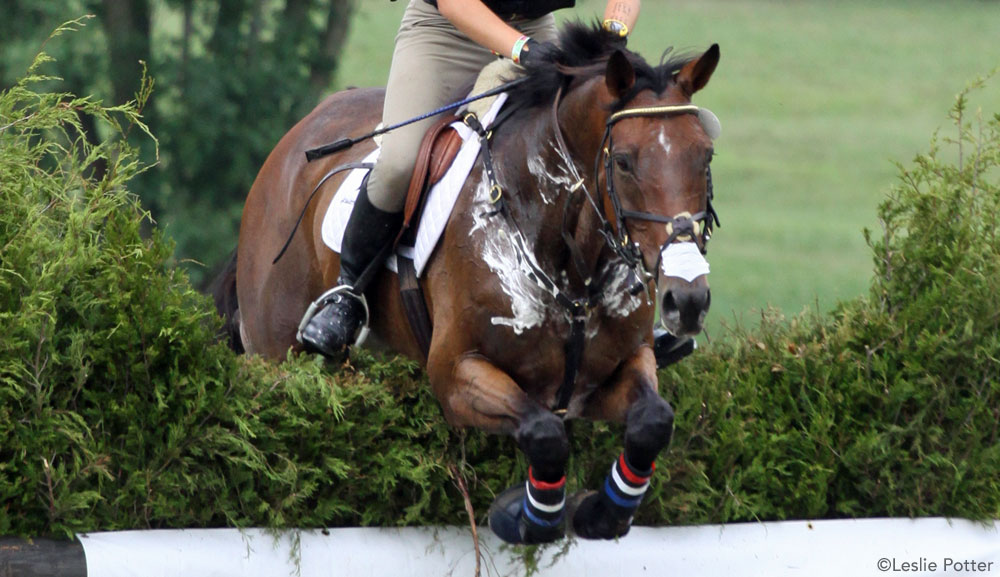
The Signs
The first sign of dehydration can be observed by testing the elasticity of the skin. Pinch an inch or two of skin on your horse’s neck forward of the shoulder, and pull it toward you. What happens when you let go? The skin on a fully hydrated horse will snap back immediately—if your horse’s skin “tents” (doesn’t instantly snap back) when pinched, he’s dehydrated.
Testing a horse’s capillary refill time (CRT) is another vital sign to monitor when checking for dehydration. Apply pressure to your horse’s gumline (using your thumb) for a couple of seconds. When you release your thumb, the normal pink color should return to the pressure point within two seconds. If not, your horse needs hydrating.
Bowel movements become dry and hard as dehydration advances, urine will appear dark yellow and opaque, even tinged with brown, and the horse’s performance will start to deteriorate. Finally, in the dangerous advanced stages of dehydration, a horse that normally sweats under working conditions may stop sweating completely to conserve precious body fluids.
It goes without saying that horses at rest should enjoy unlimited access to fresh water. But horses in transit or in work should be able to take a drink too, especially when temperatures and humidity soar. When hauling during a heat wave, try to travel at night or in the early morning hours. If that is not possible, pull over at least every two hours and offer your equine passenger a bucket of water.
Horses that don’t like the taste of strange water and refuse to drink pose a challenge. If possible, take some water with you from home. Failing that, take him to the trough with other horses you know will drink willingly. The sight and sound of others slurping on a hot day has inspired many a finicky drinker.
Endurance horses are encouraged to tank up at every opportunity along the trail, and many endurance riders administer oral electrolytes during competition and heavy workouts to maintain healthy metabolic function. When it comes to administering electrolytes, speak to your veterinarian regarding a program that will keep your horse going strong. Prevention is the best protection against dehydration. Many vets recommend feeding a scoop of electrolytes daily, year-round and providing access to a mineral block. In addition, making sure water is available during and after exercise can help prevent a dehydration crisis.
Thumps
“Thumps” is the term used to describe a condition known as synchronous diaphragmatic flutter (SDF). This condition is a sign that a horse is in severe metabolic distress from dehydration. A horse with thumps will display rhythmic twitching or “thumping” in the flank area, in time with the beating of the heart. Sometimes it is so subtle that you can only feel it under your hand. In severe cases, it is observable from several feet away.
Thumps can occur when excessive sweating causes dehydration and massive electrolyte loss. As the bloodstream is depleted of salt ions, the function of the nervous system is compromised. The phrenic nerve that runs across the heart to the diaphragm muscle begins to fire in time with the heart beat, stimulating the diaphragm muscles to contract and causing the distinctive, thumping flutter.
Thumps should be regarded as a warning sign that the horse is suffering from acute dehydration and electrolyte imbalance. Immediately stop, administer water and electrolytes, and call your veterinarian for treatment instructions. If ignored, the consequences include founder, colic, heat exhaustion or collapse. Recognizing this sign of impending metabolic failure can help to avoid more problematic consequences.
Cooling Off
To help a heat-stressed horse’s core body temperature cool down, you can speed the evaporative process by moving him to a shaded area and hosing his entire body with cold water, according to veterinary studies conducted prior to the 1996 Atlanta Olympics that focused on the management of horses in heat and humidity. The cold water will not harm the horse. Jonathan Foreman, DVM, University of Illinois, states that “if you put nearly freezing water in large volumes all over the exercising muscles of the horse, you can draw a lot of heat out of the muscles and horse will not tie up afterward.”
To assess whether your horse is recovering well after exercise, take his pulse with a stethoscope or by feeling for the pulse with your fingertips behind his jaw. After 30 minutes, if the heart rate remains above 64 beats per minute, the condition is serious—call the veterinarian.
Managing Heat Through Condition
Preventing heat stress should start long before summer. As a horse works, his body is essentially burning calories, or metabolizing energy. The harder the body works, the more energy it burns. One of the waste products of this process is heat. How efficiently the body rids itself of this heat is determined not just by ambient temperature and humidity but also by the physical and metabolic condition of the body itself.
Heavily muscled horses such as American Quarter Horses and warmbloods have a greater challenge dissipating internal body heat than lighter breeds, such as the Arabian and the Thoroughbred. Obese horses are hampered by a thick fat layer that traps heat inside. Fat horses sweat a foamy lather that contains high concentrations of vital electrolytes and does not evaporate easily.
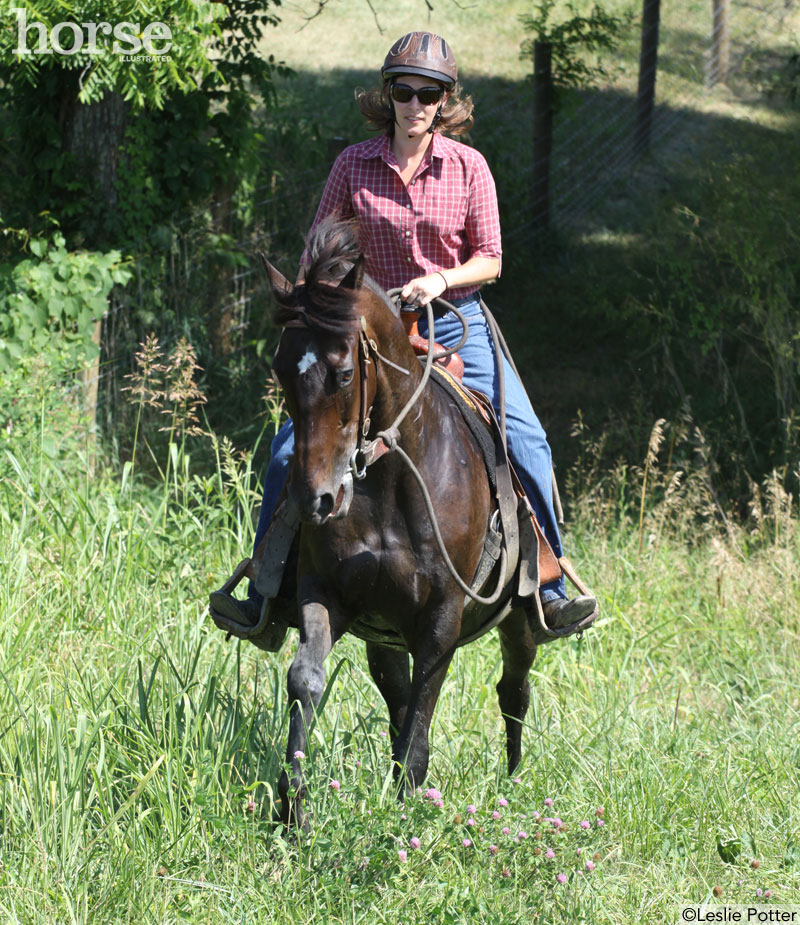
But as a horse becomes more fit, he also becomes more efficient at dissipating heat. Less demand is placed on working muscle groups. Less exertion means less heat generated by the muscles, less heat means less sweat, less sweat means less fluid and electrolyte loss.
Capillaries just under the skin serve as tiny heat exchangers as blood is pumped to the surface. As the body becomes better at conserving and utilizing electrolytes and minerals, less vital body salts are lost through sweating. This actually alters the consistency of the sweat itself, making it thinner and more easily evaporated, thus more effectively cooling the skin. Keeping your horse in shape through the winter and spring will help him adjust more easily to summer temperature spikes.
A key part of building condition involves nutrition, and diet can and should be managed for heat stress reduction. You already know overweight horses are more prone to heat exhaustion, but this is particularly true if they are fed a diet high in protein and calcium. Rich alfalfa hay and oats can predispose some horses to heat-induced health disorders. Alfalfa’s high protein level and the high fiber content of oats cause internal heat buildup and excessive sweating, which can lead to dehydration and electrolyte imbalance. Feeding grass hay, natural pasture or dryland hay, in combination with a highly digestible grain mixture, will partially minimize the risk.
The Cool Equestrian
Your horse isn’t the only one at risk of heat stroke or dehydration. Riders must take precautions to prevent overheating in summer months. Dehydration can cause dizziness, headaches and muscle cramps, all of which could create a dangerous situation while riding. Follow these simple steps to avoid a heat-induced disaster.
- Try to schedule your riding times in the morning or evening hours, when the temperatures are less punishing.
- Drink plenty of fluids. This isn’t difficult to do around the barn. But if you go for long trail rides, consider a water bottle holder for your saddle. These can be attached to the pommel of either English or western saddles, and they hold a 12-ounce bottle firmly in place while riding. For extremely long outings, wear a 1-gallon water bladder backpack with a long flexi-straw for continuous sipping, such as the CamelBak.
- Soak a bandana in water and tie it around your neck. The evaporation will cool your carotid artery, keeping your core body temperature down. Neck coolers and vests that stay cold for an extended period of time after being soaked in water are also handy.
- Wear a hat to keep the sun off your head, and shade your face and neck. Make sure your riding helmet has plenty of ventilation. There are cold packs that fit right in your helmet to keep a cool head. You can also purchase extended helmet visors for sun protection.
- If you are out on the trail and the heat is getting the best of you, dunk your shirt into a stream or water trough and wear it wet. You won’t make a fashion statement, but it will bring your body temperature down immediately and limit the amount of fluids lost to sweating.
- During steady exercise in cool conditions, fluid losses can be as high as six to seven liters per hour—when the weather heats up, losses can double. Since electrolytes are also lost, the best time to have them is before depletion begins.
- Common sense, proper nutrition, a sensible conditioning schedule and the ability to recognize the warning signs of heat stress will allow you and your horse to weather the warm summer months safely. Just remember, if you are hot on top of the saddle, your horse is even hotter under it. When in doubt, chill out.
The author lives in hot and sunny California.



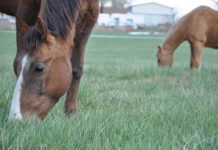

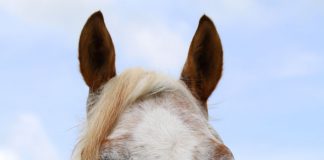

this is a good article it is sometimes weather wise like this and we need to no what to do for the better of our horses
Good idea!
Very imformative! This article cleared up all my questions.
Excellent essay! Thank you.
I’ve ridden late in the evenings, returning well after dark (11pm), near Louisville, Ky, at a walk on level ground, when the HSI was 160 and my horse was just wet under the saddle pad and she wasn’t particularly interested in water when we got back. The rides are usually 2 hours (6 miles) long.
With temp near 100 this week, this article is right on time.
Good advice to keep in mind when summer comes back again.
Great tips. I try to offer my horse plenty of water before the ride, enough breaks, and make sure they are properly cooled off when done. Quick showers and sponge downs are great for keeping them cool.
gr8 article! i often hose my horses off before tying them out. thanks 4 the article!
MY FRIENDS AND I TRY TO HIT THE TRAIL IN THE MORNING HRS BEFORE IT GETS REAL HOT, THRU THE SUMMER. WE JUST TOOK A RIDE ABOUT A WEEK AGO, AND WERE DOWN BETWEEN MOUNTAINS AND UNDER LOTS OF TREES. WE DIDNT DO ANYTHING MORE THAN WALK, AND SO WE STAYED PRETTY COOL NEARLY THE ENTIRE RIDE, WHICH WAS 4 HRS. WE CROSSED NUMEROUS CREEKS AND WAS ABLE TO STOP AND LET THE HORSES DRINK THRU-OUT THE RIDE. BUT MY FRIEND’S HORSE REFUSED TO DRINK. WE EVEN WENT INTO THE RIVER TO COOL OFF AND HE DIDNT DRINK THERE EITHER. HE PAWED THE WATER, BUT DIDNT DRINK. WE ALL WERE GETTING A LITTLE CONCERNED ABOUT HIM. THE LAST 30 MIN OF OUR RIDE IT SEEMED TO GET REALLY HOT AND MUGGY, AND WE WERE IN THE SUN A LITTLE MORE ON THIS SHORTCUT WE TOOK HOME. IT WAS TAKING A TOLL ON HER HORSE. HE WAS CARRYING HIS HEAD REALLY LOW, AND WAS REALLY TIRED. HE ALSO STUMBLED A FEW TIMES, NEARLY FALLING. MY FRIEND CHECKED HIS GUMS AND THEY SEEMED A LITTLE PALE AND WERENT GETTING THEIR COLOR BACK LIKE AFTER DOING THE CRT. SO SHE LEAD HIM THE REST OF THE WAY BACK TO THE TRAILER. HE STILL WOULDNT DRINK AFTER GETTING BACK. HE DID GET HOSED REALLY GOOD AND SHE KEPT HIM IN THE SHADE FOR A GOOD 15 MIN OR SO. HE SEEMED OK AFTER THAT. BUT HE DIDNT DRINK ANY UNTIL AFTER SHE GOT HIM HOME. AFTER THIS INCIDENT, IM PLANNING ON CARRYING A TUBE OF ELECTROLYTES IN MY BAG INCASE SOMETHING LIKE THIS WOULD EVER HAPPEN AGAIN. WHICH I HOPE NOT! ITS SCARY TO THINK HE COULD HAVE COLLAPSED WHILE WE WERE OUT IN THE WOODS WITH NO WAY OF GETTING HIM BACK, OR GETTING HELP TO HIM.
This is excellent information. It has been VERY humid in my part of the country, and I have been concerned about heat injury. Thanks for these timely tips!
Great advice! And it’s nice to know that humidity plays such a vital role. That means that when it’s 100 degrees here I can still ride fine! So nice to live in a dry area!
I wonder if humans can get thumps? I’ve experienced something similar with heatstroke.
Thank y’all for informing everbody. I was wonderin’ if it was to hot to ride today or not but I used the formula above and decided we should take it easy. Thanks!
Hmmmm, sometimes it seems that using the dew point and temperature makes more sense, at least here in upstate New York. If I used the humidity I’d never ride, even on days that were in the 70s. Just sayin. 🙂
I moved my draft and draft cross from Michigan to Phoenix AZ. I had many questions and apprehension about the welfare of my horses. They are in Flagstaff, where it is about 25 – 30 degrees cooler for now. With the information I read, I feel much more confident in making decisions rather than stressing out. It’s a great article. Covers many variables.
good practical all round information that can be readily put into practice as well as recognizing the warning signs of severe dehydration
I live in the SE. Summer, is a good time for fans and lakes. Ride before 9 and hit the AC. It’s going to be 101 tomorrow, with 80% humidity.
Very helpful as I am concerned about moving to Palm Springs CA from Seattle Washington. I have 2 horses that I will be moving with me. How do horses adjust from such a climate change.